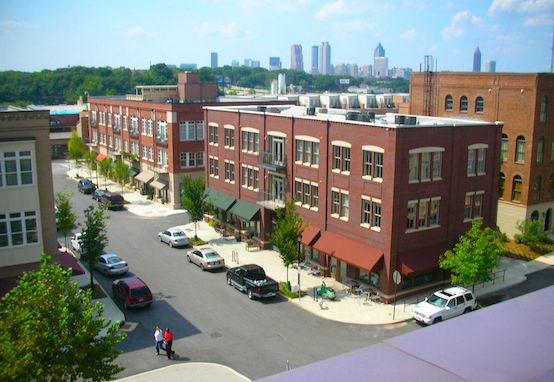Welcome

Welcome to New Urbs. Over the course of the next year, The American Conservative will be opening a discussion on how to rebuild America’s communities and sense of place by fostering humane, sustainable, and walkable built environments. For while the breakdown of community and the family is a consistent theme in conservative circles, the conversation very rarely gets beyond some mix of exhortation towards traditional values and demands for rollback or reform of the welfare state. That’s where a school of urban design called “New Urbanism” comes into play.
Just as an individual is embedded in a family, and a family is embedded in a community, so too a community is embedded in its neighborhood. The patterns we live in can bring us into the sort of constant, casual, incidental contact that builds bonds between neighbors, or they can silo each of our families away, leaving civil society to wither as the “place between” is filled with asphalt and strip malls. As Paul Weyrich, William S. Lind, and Andres Duany wrote in “Conservatives and the New Urbanism” in 2006, “Edmund Burke told us more than two hundred years ago that traditional societies are organic wholes. If you (literally) disintegrate a society’s physical setting, as sprawl has done, you tend to disintegrate its culture as well.” New Urbanists aim to reinvigorate those traditional structures, like the classic Main Street with living space above the storefronts, and other homes right around the corner.
Suburban sprawl has, through an accident of history, often been defended by conservative Americans, especially those who mistakenly consider suburban living to be the pure product of free choices and free markets. Yet traditional building of the sort encouraged by New Urbanism is very amenable to conservative sensibilities. Traditional neighborhoods where a family can live within walking distance of their church, or send their child to the grocery store to pick up an ingredient for dinner, are often illegal to build today. Even the supposed free-market success of the automobile over mass transit has itself been heavily subsidized. These issues are of a kind with arguments and concerns that conservatives of all stripes should be very familiar with.
After decades of exploding sprawl, humane environments are making a comeback, and that will be the focus of conversation here at New Urbs. We will be bringing attention to efforts currently under way to rescue and rehabilitate legacy environments, as well as looking at promising new projects. We will be discussing and exploring the ways the federal government has undermined sustainable environments and encouraged sprawl, and the ways local regulations and laws have followed its lead. Transit strategies will be debated, bringing a conservative perspective to a crucial place-building discussion. We will also be taking a hard look at some of the toughest questions facing New Urbanism, such as family-friendliness, affordability, and the balance to be struck between effective design and overzealous mandates.
While many details will be fleshed out and explored at greater length over the next year, there are a couple common misconceptions worth dispelling at the outset. First, as Matt Lewis wrote recently at The Week, “Nobody I know is suggesting that big government — or the U.N.! — ought to mandate or impose these sorts of development policies.” As conservatives should know better than anyone, one can support something without believing that the state should mandate it, and one can oppose something without believing the state should ban it. The problem now is that so many places do ban New Urbanist development, often requiring developers to request dozens if not hundreds of variances and exceptions to local rules, at significant cost.
And second, “New Urbanism” does not equal big cities, or small towns for that matter. The rural-to-urban Transect developed by New Urbanist Andres Duany provides for high-density urban downtowns, medium-density suburbs, and even nearly no-density rural and natural environments, all within a proper understanding of place. There is plenty of room for debate about how to best put sound principles into built practice, but we should begin the discussion with clarity.
So please bookmark this page, add the RSS feed, and follow “New Urbs” on Twitter. I’ll be running things, writing on the issues described above, and flagging some of the most interesting on-topic material from around the web. I’ll also be bringing in a variety of other writers, conservatives and urbanists, to carry the conversation forward. On that note, if you are intrigued by any of what you’ve read above and would like to discuss it or write about it, my e-mail address is jcoppage (at) theamericanconservative.com, and I would love to hear from you.
I hope this space can become a community of its own, and I look forward to rigorous, good-faith discussions in the comment threads. Keep coming back.
Comments